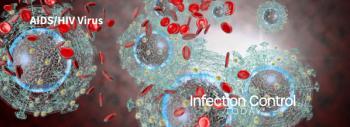
Tips on the Conversion to Single Use Blood-Draw Hubs
Tips on the Conversion to Single Use Blood-Draw Hubs
By Michael Garvin, MHA
TheNational Phlebotomist Association (
First, the conversion will impact healthcare clinicians who are used tocarrying around a tray on which sits a needle disposal container. This allowsthat person to detach the needle from the multi-use blood-draw hub. With theconversion to single-use devices, all blood-draw sets will need to be placed ina sharps disposal container. Secondly, the conversion will negatively impact theefforts by the facility to reduce its amount of infectious waste.
In the late 1990s, the American Hospital Association (AHA) and the U.S.Environmental Protection Agency (EPA) signed a joint letter of agreement,detailing a commitment that the healthcare industry would reduce the amount ofinfectious waste generated by 50 percent by 2003. The conversion to single-useblood-draw sets will negatively impact a facility's effort to reduce wastevolumes. Thirdly, a conversion will negatively impact hospital's budgets in thatfacilities will have to not only pay more for blood draw sets but will have topurchase more sharps disposal boxes.
One way to meet both the commitment to regulatory compliance as well as beinga solid environmental citizen is to not include the single-use hub as infectiouswaste. The safety feature activated needle would have to be disposed of in asharps disposal box but the hub would not meet the criteria of infectious waste.
The standard definition of infectious waste is that the waste item issaturated with blood or other potentially infectious body fluid to a point thatit would drip if compressed. This is not the case of the blood-draw set hub. Theneedle can be covered with the safety feature and then the needle assembly canbe detached using a needle disposal box that is designed with a "grip anddrop" slot. This way the backside of the needle is never exposed so aninjury cannot happen. The hub can then be placed in a regular waste containerwithout any violation of safety or waste regulation.
If a facility decides to implement this approach to managing the single-useblood-draw conversion, it is strongly recommended that a document be writtenexplaining the rationale and procedure. The document should include:
- A rationale statement that make note of the facility's effort to satisfy both the need to employee and patient safety as well as respecting a commitment to its environmental obligations;
- A statement that there is no other way to meet both safety and environment commitments other than to have the staff safely remove the covered needle from the holder with a "grip and drop" slot on the needle disposal container;
- A statement that the back-side needle is never exposed; and
- A statement that sharps injuries involving blood-draw devices will be review to ensure that a high level of safety is maintained at all times.
Newsletter
Stay prepared and protected with Infection Control Today's newsletter, delivering essential updates, best practices, and expert insights for infection preventionists.






